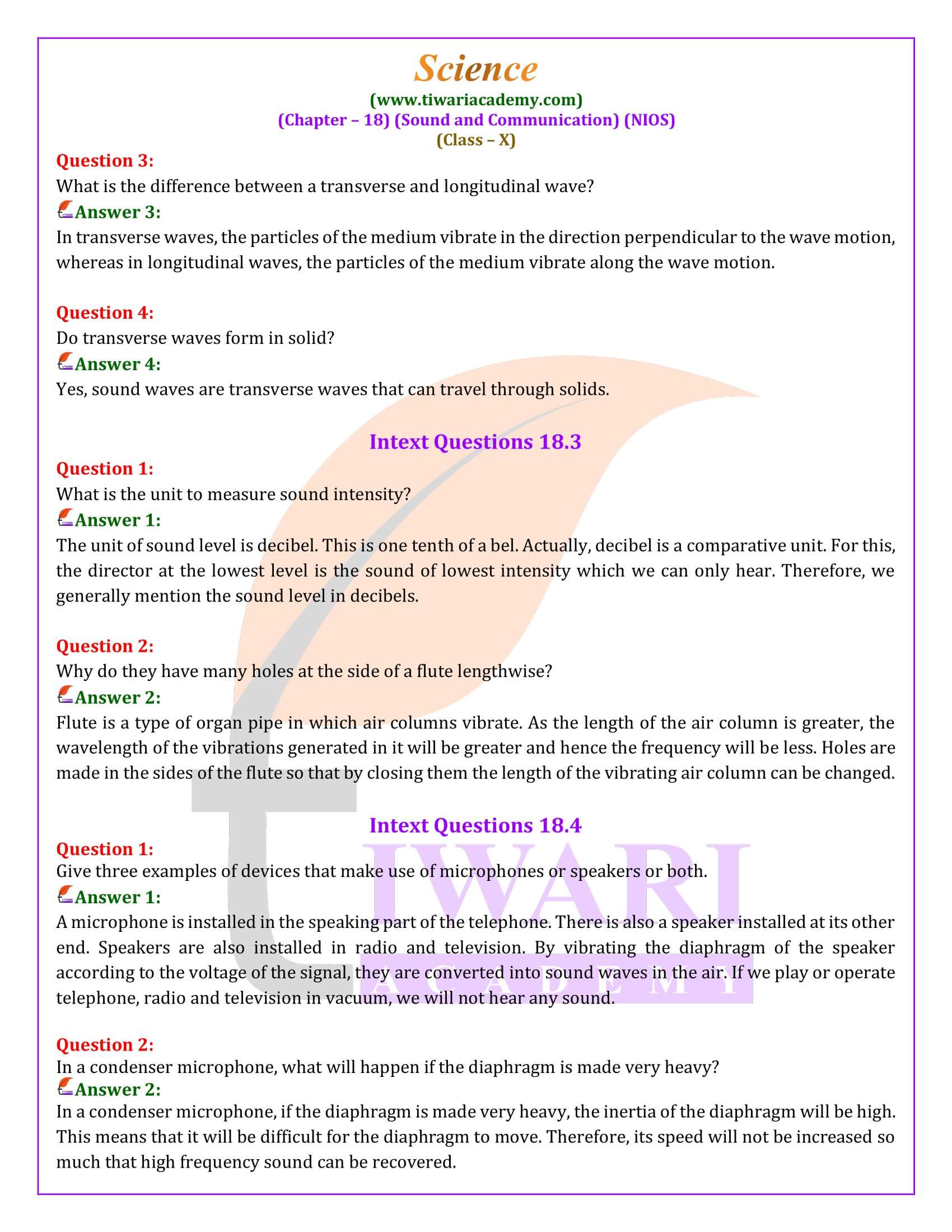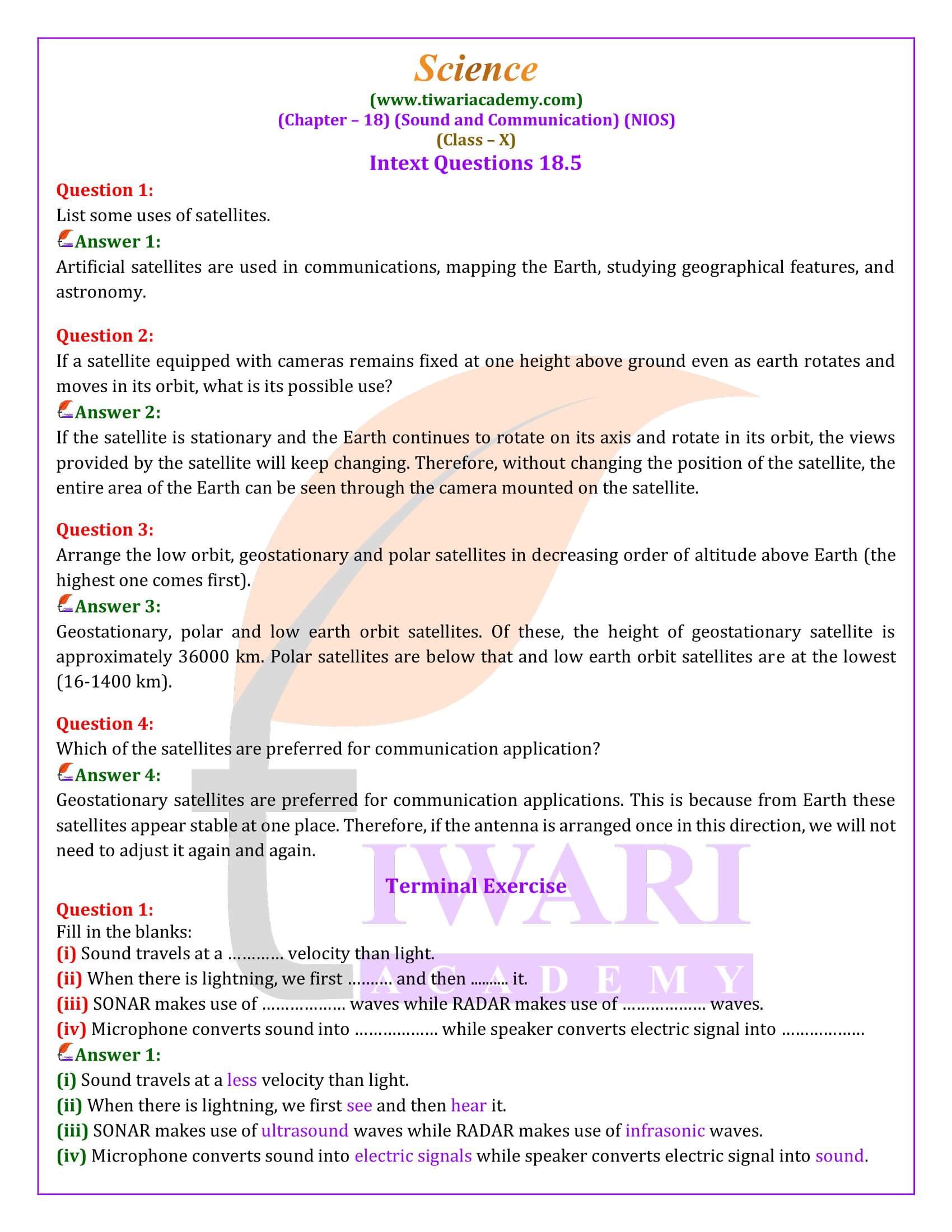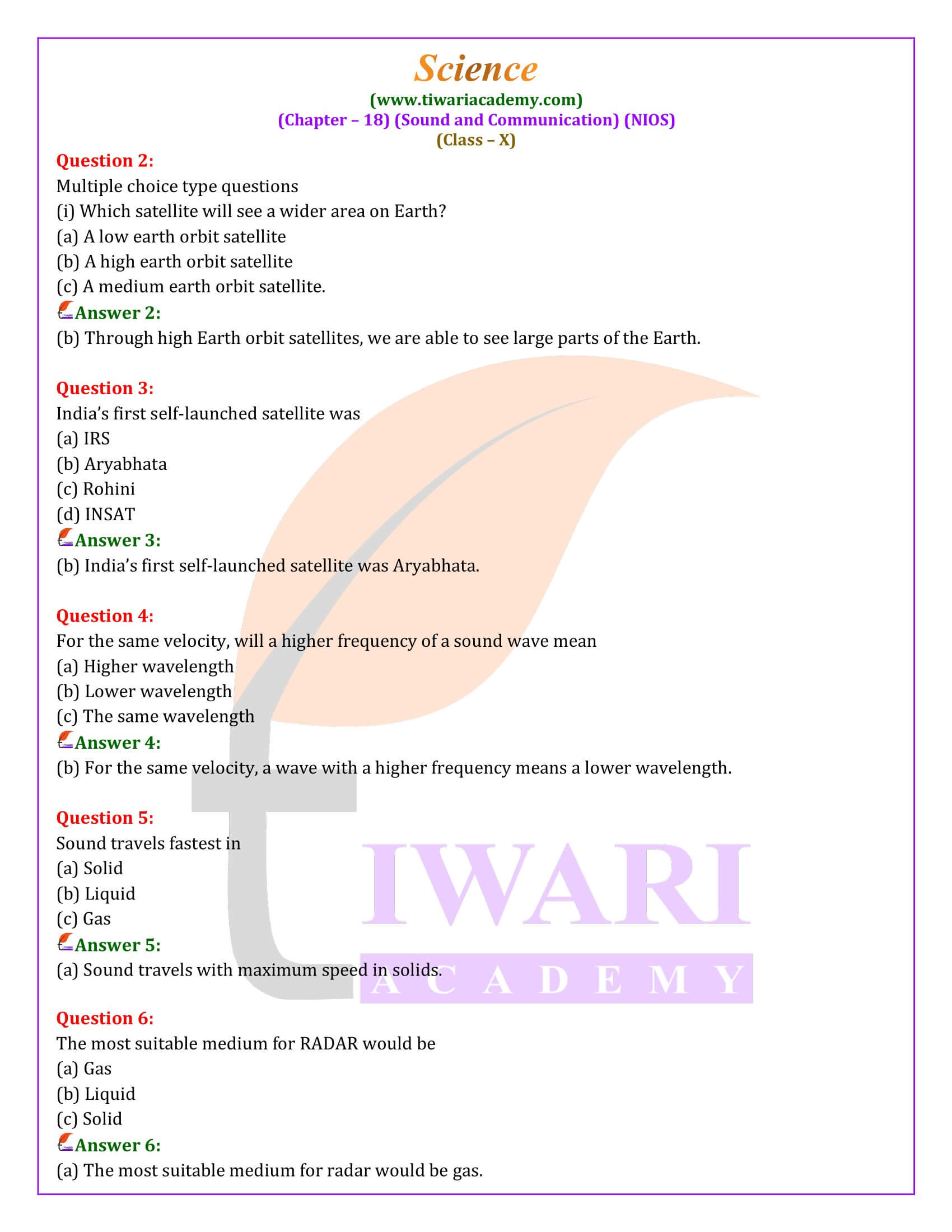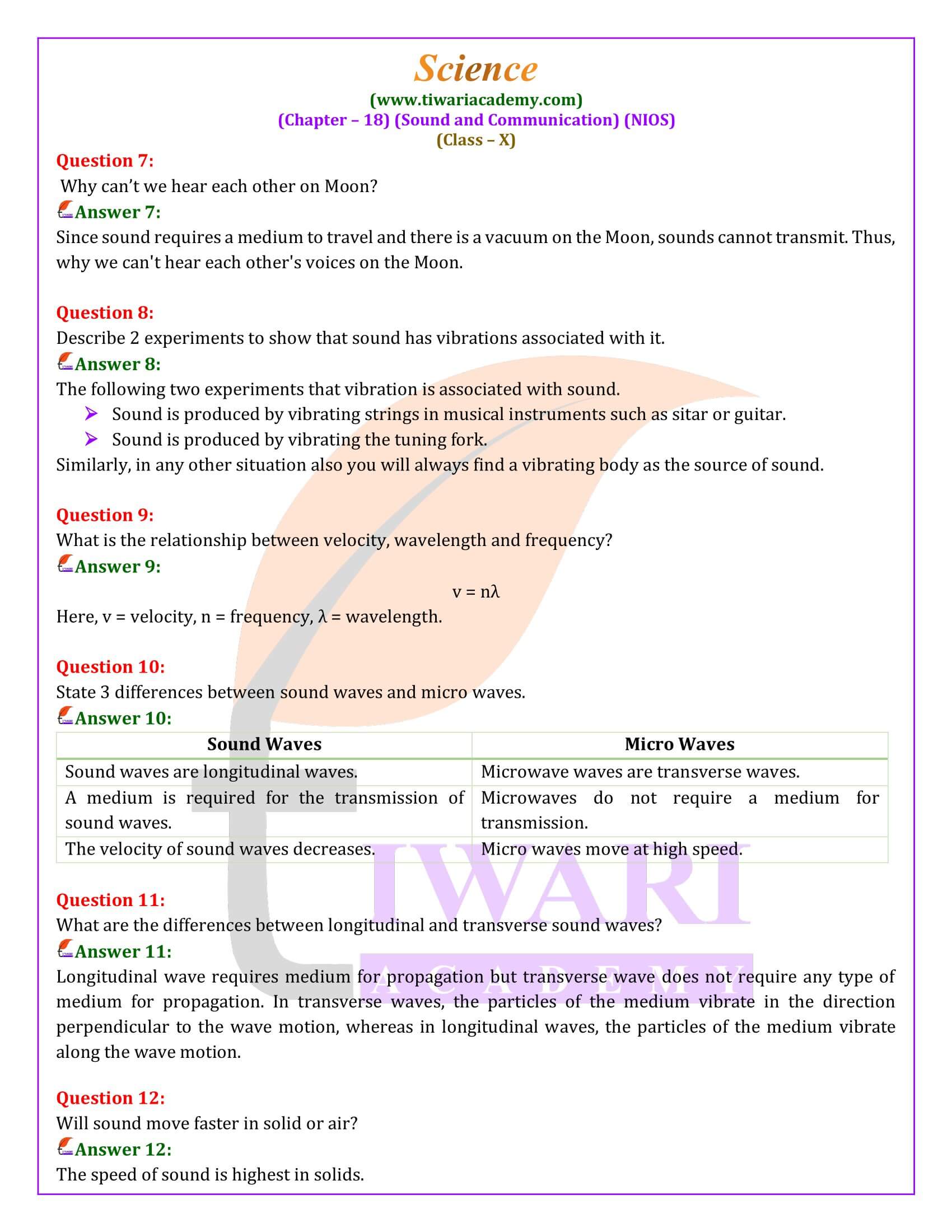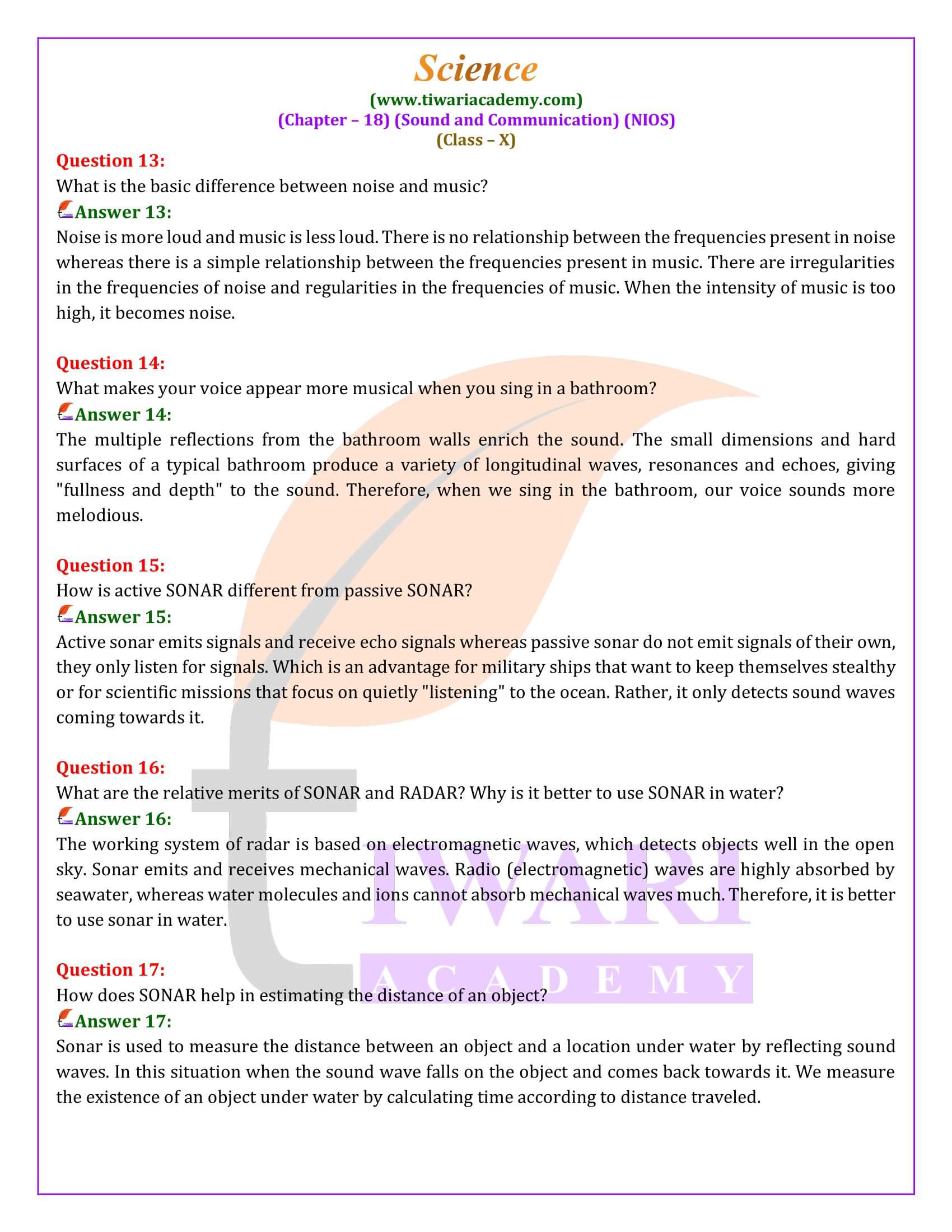NIOS Class 10 Science Chapter 18 Sound and Communication in Hindi and English Medium updated for new academic session 2025-26 free to use. The NIOS Class 10 Science Chapter 18 Question Answers are written in simple format so that students can understand easily.
NIOS Class 10 Science Chapter 18 Sound and Communication
Sound and Communication
NIOS Class 10 Science Chapter 18 on Sound and Communication from the provided science and technology module offers a comprehensive examination of the fundamental concepts of sound, its properties, and its various applications in communication systems. This detailed overview not only explains the scientific principles of sound but also illustrates its practical uses in everyday life and advanced technological systems like SONAR and RADAR.
Fundamentals of Sound
Sound is a type of energy that emanates from vibrating objects. The vibrations cause waves that travel through mediums such as air, water, and solids. Understanding sound involves recognizing that it requires a medium to propagate and its transmission is greatly affected by the properties of the medium. For instance, sound cannot travel in a vacuum, such as on the moon, because there is no medium to carry the vibrations.
The nature of sound waves is explained through their basic characteristics: wavelength, frequency, amplitude, and speed. These parameters are crucial for defining how sound behaves under different conditions. For example, the frequency of a wave determines its pitch, which is why a flute sounds different when various holes are covered or uncovered.
Communication Through Sound
The role of sound in communication is pivotal. From primitive times when humans used sound to convey messages over distances through coded drumming or horn blowing, to modern-day telecommunication systems, sound has been an indispensable tool. In contemporary settings, technologies such as telephones, radios, and televisions use sound waves to transmit and receive information.
One notable application is the use of sound waves in SONAR (Sound Navigation and Ranging) technology, which is employed in marine navigation to detect objects underwater by emitting sound waves and interpreting the echoes received. This method is effective in water, where electromagnetic waves, used in RADAR systems, would quickly attenuate.
Technological Advances in Sound Communication
The development of various devices has significantly enhanced the ability of sound to facilitate communication. Microphones convert sound into electrical signals, which can then be amplified, recorded, or transmitted over distances. Speakers work on the reverse principle, where electrical signals are converted back into audible sound. The advent of digital technology has further refined the quality and efficiency of these devices, allowing for more reliable and clear communication.
The integration of sound technology with the internet and satellite systems has broadened the scope of communication possibilities. Satellites enable long-distance communication signals to be sent and received across the globe, making instant global communication feasible. The internet uses similar principles to transmit data, which includes sound, across vast networks with minimal delay.
Environmental and Health Considerations
Despite the numerous benefits of sound technology, it is not without its drawbacks. Sound pollution is a growing concern, particularly in urban environments where excessive noise can lead to significant health issues such as hearing loss and elevated stress levels. NIOS Class 10 Science Chapter 18 discusses the importance of managing sound levels and developing technologies that minimize the harmful impacts of noise pollution on both health and the environment.
The exploration of sound and communication in NIOS 10th Science Chapter 18 highlights the complexity and significance of this fundamental aspect of human experience and technology. From basic scientific principles to complex applications in modern technology, sound remains a central element in our ability to understand and interact with the world. Class 10 Science chapter 18 not only educates on the various aspects and uses of sound but also prompts consideration of the environmental and health implications of its widespread use in society.

